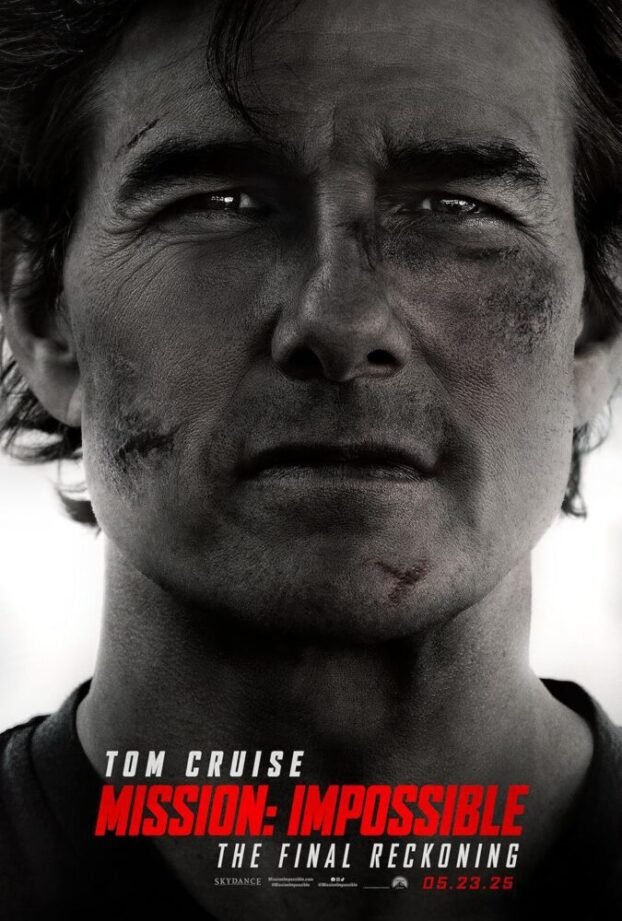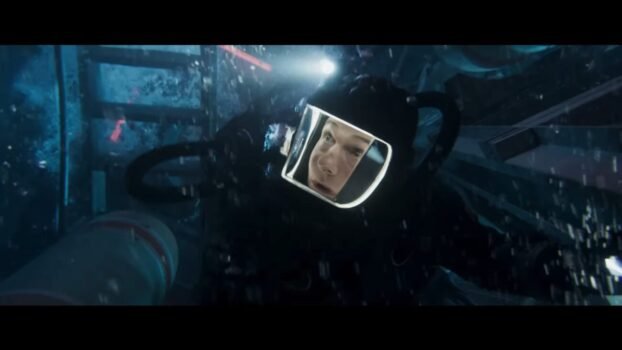The Final Reckoning is (possibly) the final film in the Mission: Impossible franchise, closing off a series of installments that have been going steady since 1996. (following on from the ‘60s and ‘80s TV show). In doing so, it incorporates various plot points and characters from Ethan Hunt’s (Tom Cruise) past missions. By closing the narrative loop, it asks a few questions: Can we escape our mistakes? What defines us as individuals? And is there an outside force determining our choices, or are we free to forge our own destinies? It wraps these age-old questions inside a nearly 3-hour, $400 million-budget action flick. It mostly succeeds in this endeavor; however, a lackluster villain hampers its quality. Unfortunately, The Final Reckoning’s script also misses several opportunities to dig further into its characters’ motivations and backstories.

The World is at Stake
Picking up 2 months after the conclusion of Dead Reckoning, The Final Reckoning rejoins Ethan as he receives a message from U.S. President Erika Sloane (Black Panther’s Angela Bassett): turn himself in and prevent a worldwide disaster. Knowing he can’t allow The Entity to fall into any government’s hands, he dedicates himself to hunting down The Entity’s “angel” and previous main servant, Gabriel. Only Gabriel knows what the Sevastopol is, and only he can lead Ethan to the source code. Gathering his team (Benji, Grace, Luther, and Paris), Ethan embarks on one last mission, one that will decide the fate of every last living organism on Earth.
The stakes have never been higher in a Mission: Impossible film. Ethan holds full responsibility for the world’s fate. He is under astronomical pressure and, without revealing anything, the guilt he must feel is even greater. As a result, the tone of the film is significantly more somber than that of previous installments. Some fairly interesting character dynamics are explored, too, especially through Gabriel’s manipulation of Ethan. He uses Ethan’s history of personal sacrifices, broken relationships, dead comrades, and lovers to goad him into doing his bidding.

The recall of past events in M:I films was not necessarily needed. I doubt they wrote the events of the previous installments to lead into this one purposefully. But, as said before, I appreciated how they allowed the writers to experiment with Ethan’s character. So, a bit of retconning to twist the proverbial knife was fine. Unfortunately, this is also where the film is at its weakest, but we’ll address that later.
In the Air and Under the Ice
You’re probably seeing The Final Reckoning for its action, and it does not disappoint. The one most advertised is the biplane stunt, which comes at the climax of the film. Cruise performed the entire stunt himself, with no CGI or stunt doubles. Flying at speeds of up to 145 mph, the biplane sometimes even went upside down. Cruise had to take breaks to replenish himself on the wings because it got so exhausting. Well, all that effort paid off, and then some. While the stunt itself may be overtly long, it is visually arresting and incredibly harrowing. But it is not the best sequence in the film. That award goes to the underwater submarine set piece.

While I felt the length of the biplane stunt, the submarine sequence kept me engaged throughout its entire runtime. The camera follows Ethan as he struggles and swims through the passages and hatches of the submarine to find The Entity’s module; it switches from the interior of the vessel to the exterior of the sub, as we watch it roll ever so slowly towards the edge of an underwater cliff. This was by far my favorite part of the movie.
It is Written
But while the action sequences were engaging, they couldn’t make up for the holes left by the themes that the script wanted to explore. Dead Reckoning set up The Entity as a sort of Old Testament God that knew all and foretold all. The inclusion of a villain named Gabriel (the angel in Judeo-Christian Lore who carries out God’s will) makes it ever clearer. A character even mentions the flood in Genesis when discussing The Entity’s goals.
But that’s where the problems lie. I spent the majority of The Final Reckoning questioning The Entity’s motivation, only for its reasoning to be swept away in a few sentences. Gabriel’s backstory is even more suspect. He had involvement with Ethan before even the events of the first installment, but those details are left extremely vague.

This doesn’t do much for Ethan’s character either. Ethan supposedly did something that led to his choice to join the IMF, but further details of what he did (or even if he was framed) are never explored. All we know is that it once again involved a woman (one named Marie), whom Gabriel killed, and Ethan’s retaliation towards that action.
It is implied that Ethan actually killed someone or had a checkered past (this isn’t much of a spoiler), but the reasons are never fully explored. This is an excellent opportunity to frame Ethan’s actions throughout the series as a redemptive arc, a chance at atonement for his sins. It echoes Luther’s words, “Our lives are not defined by any one action. Our lives are the sum of our choices.” This is largely a missed opportunity.
Other details in the script are missing as well. Luther is sick for no discernible reason. And while some of the aforementioned retconning was fine, other choices felt particularly forced.
This Message Will Self-Destruct…
All that said, I did enjoy seeing Simon Pegg, Haley Atwell, Pom Klementieff, and Ving Rhames back in action as Benji, Grace, Paris, and Luther, respectively. M:I-TFR is a good popcorn flick, gesturing toward some interesting ideas, even if it didn’t fully explore them. And damn, was that underwater sequence cool! The Mission: Impossible series doesn’t end on the highest possible note, but The Final Reckoning does leave us awestruck at Cruise’s stunts one last time, and that makes it worth it.
Score: 7/10
Mission: Impossible – The Final Reckoning is now playing in theatres nationwide.

